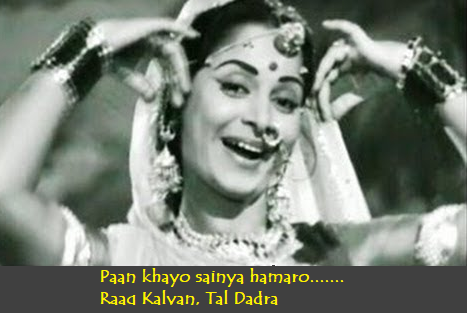Raaga Based Song of the Day: Paan khaye sainya hamaro….
Raag Kalyan, Tal Dadra
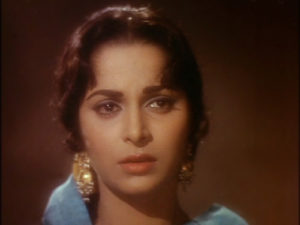 Tomorrow, 3rd February 2018 is a special day. It is the birthday of the Living Legend Waheeda Rehman. I generally forget her birthday and one of the reasons that I have put my finger on is that it is a subconscious attempt not to see her becoming older (Please read: Happy Birthday Waheeda Rehman 03 February). She is an actress beyond compare. The heart and soul that she puts into her acting NDTV to honour her with the Living Legend award given by the President (one of the thirty on the occasion of NDTV’s thirtieth anniversary in 2013). Take this song itself. It is a nautanki song and her acting, dancing and histrionics all give the impression of doing nautanki.
Tomorrow, 3rd February 2018 is a special day. It is the birthday of the Living Legend Waheeda Rehman. I generally forget her birthday and one of the reasons that I have put my finger on is that it is a subconscious attempt not to see her becoming older (Please read: Happy Birthday Waheeda Rehman 03 February). She is an actress beyond compare. The heart and soul that she puts into her acting NDTV to honour her with the Living Legend award given by the President (one of the thirty on the occasion of NDTV’s thirtieth anniversary in 2013). Take this song itself. It is a nautanki song and her acting, dancing and histrionics all give the impression of doing nautanki.
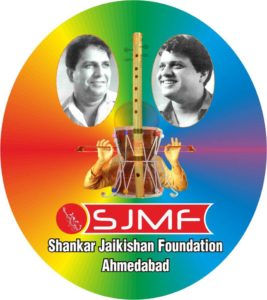 Tomorrow, 3rd February 2018 also happens to be the Second Mumbai Meet of Shankar Jaikishan Music Foundation (SJMF). This Foundation, based in Ahmedabad, has done a lot to keep alive the music of S-J, who were the best music duo that we ever had in the Hindi movies. I had to, therefore, find a song that would pay tribute to both and it wasn’t difficult to find. It is from the 1966 Shailendra (Lyricist often to be found with Shankar Jaikishan, together with Hasrat Jaipuri) production and Basu Bhattacharya directed movie Teesri Kasam of which one song I have already given you in this series, viz: Duniya banane waale kyaa tere man mein samayi in Raag Bhairavi, Tal Kaherava (Please see: Raaga Based Song Of The Day #85).
Tomorrow, 3rd February 2018 also happens to be the Second Mumbai Meet of Shankar Jaikishan Music Foundation (SJMF). This Foundation, based in Ahmedabad, has done a lot to keep alive the music of S-J, who were the best music duo that we ever had in the Hindi movies. I had to, therefore, find a song that would pay tribute to both and it wasn’t difficult to find. It is from the 1966 Shailendra (Lyricist often to be found with Shankar Jaikishan, together with Hasrat Jaipuri) production and Basu Bhattacharya directed movie Teesri Kasam of which one song I have already given you in this series, viz: Duniya banane waale kyaa tere man mein samayi in Raag Bhairavi, Tal Kaherava (Please see: Raaga Based Song Of The Day #85).
Today is the fourth day that I am giving you a song based on Kalyan. To start with I gave you a song in this raag without any tal since the whole song was as an Alaap: Lagta nahin hai dil mera (Please see: Raaga Based Song Of The Day #14). Then I gave you another in the same raag Klayan and Tal Dadra: Bhooli hui yaadon (Please see: Raaga Based Song Of The Day #63). In between I also gave you my most favourite song of Lata Mangeshkar in Raag Shuddha Kalyan, Tal Kaherava: Rasik Balma (Please see: Raaga Based Song Of The Day #33 and My Favourite Songs Of Lata Mangeshkar).
We have completed ninety days of Raaga Based Songs of the Day. Our first post in the series was titled ‘Raaga Based Song Of The Day #1’ and the song was a Mohammad Rafi and Lata Mangeshkar song from the 1970 Shakti Samanta movie Pagla Kahin Ka: Tum mujhe youn bhula na paoge. It is in Raag Jhinjhoti, Tal Kaherava.
Our ninetieth post or the last post was titled ‘Raaga Based Song Of The Day #90’ and the song was a Mohammad Rafi song from the 1968 Bhappi Sonie movie Brahmachari starring Shammi Kapoor, Rajshree, Mumtaz and Pran: Dil ke jharokhe mein tujhako bithakar. It is in Raag Shivaranjani, Tal Dadra.
This blog has a number of posts on Raaga based songs in Hindi movies titled similarly; for example: ‘The Best Raaga Based Songs in Hindi Movies – Raaga Bhairavi – Part I‘.
In the last ninety days of sharing Raaga based songs of the day, I have given you songs based on Raag Jhinjhoti, Gara, Bhimpalasi, Madhuvanti, Shivaranjani, Bihag, Pahadi, Sarang, Pilu, Bhairavi, Khammaj, Charukesi, Kalyan or Yaman, Desh, Malgunji, Kirwani, Kedar, Bageshri, Megh Malhar, Bhupali, Ahir Bhairav, Malkaush, Mand, Adana, Kafi, Rageshri, Jaunpuri, Tilang, Janasammohini, Chayanat, Shuddha Kalyan, Gaur Sarang, Jogiya, Asavari, Maru Bihag, Durga, Lalit, Puria Dhanashri, Bhinna Sahdja, Sohani, Multani, Patdeep, Jaijaiwanti, Tilak Kamod, Hemant, Basant Mukhari, Gujri Todi, Kalavati, Hamir, Bhatiyar, Gawati, Shyam Kalyan, Gorakh Kalyan, Madhamat Sarang, Manj Khammaj, Darbari Kanada, Vibhas, Shankara, Bahar, Nand and Mian Ki Malhar; making it a total of 61 raagas. The raagas that have been repeated so far are Pahadi, the raaga of my home place in the Himalayas, Maru Bihag, Raag Kirwani, Jhinjhoti, Bhairavi, Gara, Basant Mukhari, Malkauns, Bhairavi, Mand, Sohani, Madhuvanti and Shivaranjani. Today, I am repeating Raag Kalyan.
Raag Kalyan is the basic raaga of Kalyan Thaat. Its Jati is Sampurna-Sampurna, that is, all seven notes in Aaroha and all seven notes in Avaroha. All the scale notes (called swaras) in the raga are Shuddha, the exception being Teevra Madhyam or prati madhyamam. It is sung during the first prahar of the night, that is, between 6 to 9 PM. Raag Kalyan of Hindustani Music is also known as Raag Yaman in Carnatic Music; however, Raag Yaman Kalyan is a totally different raag. Considered to be one of the most fundamental ragas in the Hindustani Classical tradition, it is thus often one of the first ragas taught to students.
Some of the Hindi films songs composed in raag Shyam Kalyan are:
| 1. 2. 3. 4. 5. 6. 7. 8. 9. 10. 11. 12. 13. 14. 15. 16. 17. 18. 19. 20. 21. 22. 23. 24. 25. 26. 27. 28. 29. 30. 31. 32. 33. 34. 35. 36. 37. 38. 39. |
Khuda Nigahbaan Ho Main Kya Jaanu Kya Aansoo Bhari Hai Man Re Tu Ang Ang Rang Re Man Sur Mein Ga Aapke Anorodh Par Is Mod Se Jate Jo Tum Todo Piya Hamari Thodi Si Bewafai Aaj Hum Apni Nav Kalpana Nav Roop Na Jao Saeeyan Mithe Bol Bole Mitwa Bole Meethe Jane Kya Sochkar Tarana Mohe Maro Na Kanha Dekho Ri Koi Ehsaan Tera Hoga Chale Ja Rahe Hain Yahi Hai Tamanna Gahar Se Nikalte Saras Raat Man Bhaye Salaam-e-Hasrat Kabhi Kabhi Mere Dil Mein Nigahein Milane Ko Paan Khayo Saiyan Hamaro Sabere Ka Suraj Tera Chhehera Woh Shaam Kuchh Maangne Se Jo Maut Mausam Hai Aashiqana Sapna ban Saajan Chhupalo Yun Dil Woh Jab Yaad Aaye Jhamela Jhoote Jag Ka Diya Jalao Jagmag Nukta Chi Hain |
Mughal-E-Azam Zindagi Parvarish Chitralekha Sandhya Lal Pathar Anurodh Aandhi Meera Thodi Si Bewafai Pakeezah Mrigtrishna Sahib Bibi Aur Ghulam Kinara Parichaye Kinara Pakeezah Manavta Ganga Ki Leherein Junglee Kinare Kinare Aapki Parchhaiyan Papa Kehte Hain Suwarn Sundari Babar Kabhi Kabhi Dil Hi To Hai Teesri Kasam Ek Baar Muskura Do Aapas Ki Baat Khamoshi Sunehere Kadam Pakeezah Shokhiyan Mamta Parasmani Bhajan Tansen Mirza Galib |
Lata K L Saigal Mukesh Rafi Sulakshana Asha, Manna Dey Kishore Lata, Kishore Vani Jayram Kishore, Lata Lata Rafi Geeta Dutt Bhupendra, Lata Bhupendra Kishore Lata Lata Asha Rafi Manna Dey Rafi Udit Narayan Rafi, Lata Sudha Malhotra Mukesh, Lata Asha Asha Kishore Kishore Kishore Lata Lata Lata Lata, Hemant Lata, Rafi Mukesh K L Saigal Suraiya |
As far as Tal Dadra is concerned I have given you enough already.
The song I have taken for you today is from the 1966 Shailendra production and Basu Bhattacharya movie Teesri Kasam starring Raj Kapoor and Waheeda Rehman. It was penned by Shailendra, composed by Shankar Jaikishan and sung by Asha Bhosle.
Shailendra was known for his deep thinking. Indeed, this type of deep thinking is true of all songs of the 1966 movie Teesri Kasam. Shailendra had Basu Bhattacharya direct the movie. In later years (after the movie flopped at Box Office), people realised what a masterpiece it was. In any case, it won the National Award for Best Feature Film of that year. The film starring Raj Kapoor (there is a controversy about him delaying the film to ensure the success of his 1964 movie Sangam) and Waheeda Rehman is based on the short story Mare Gaye Gulfam by the novelist Phanishwarnath Renu. Mare gaye gulfam was also the title of a song in the movie that was penned by Shailendra’s co-lyricist Hasrat Jaipuri:
| 1. | “Aa Aa Bhi Jaa” | Shailendra | Lata Mangeshkar | 5:03 |
| 2. | “Chalat Musafir” | Shailendra | Manna Dey | 3:04 |
| 3. | “Duniya Bananewale” | Hasrat Jaipuri | Mukesh | 5:03 |
| 4. | “Haye Ghazab Kahin Tara Toota” | Shailendra | Asha Bhosle | 4:13 |
| 5. | “Maare Gaye Gulfaam” | Hasrat Jaipuri | Lata Mangeshkar | 4:00 |
| 6. | “Paan Khaye Saiyan Hamaaro” | Shailendra | Asha Bhosle | 4:08 |
| 7. | “Sajanwa Bairi Ho Gaye Hamar” | Shailendra | Mukesh | 3:51 |
| 8. | “Sajan Re Jhoot Mat Bolo” | Shailendra | Mukesh | 3:43 |
| 9. | “Lali Lali Doliya Mein Lali Re” | Shailendra | Asha Bhosle | 3:11 |
| 10. | “Kissa Hota Hai Shuru” | Hasrat Jaipuri | Shankar-Shambhu | 2:57 |
The song too had lyrics by Shailendra.
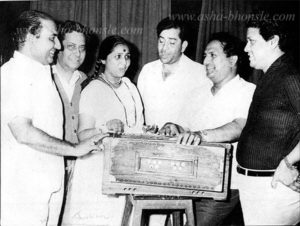
The lyricist Shailendra has been called by me as lyricist beyond compare (Please see: ‘The Best Songs Of Shailendra, The Lyricist Beyond Compare – Part I‘ and ‘Part II‘). Unlike almost all poets turned lyricists of that era, Shailendra was solely a lyricist; lyrics were his life and he put his life and soul into it. His lyrics always made you think, frequently with their deeper meaning. This song is from a movie that was his only production. He really put his heart and soul into the songs. The movie wasn’t a success at post office. This broke Shailendra’s heart to the extent that he took to heavy drinking, which ultimately led to his death.
Take this song itself. It is a typically nautanki song and yet, he let in his signature deep-thinking into it too:
( बगिया गुन-गुन पायल छुन-छुन
चुपके से आई है रुत मतवाली ) -२
आ
खिल गईं कलियाँ दुनिया जाने
लेकिन न जाने बगिया का माली
बगिया का माली
Now, anybody would start thinking as to what he meant by Bagiya ka mali.
Lets get to the movie: Teesri Kasam. As I said, this 1966 movie was the first and last production of the lyricist Shailendra and directed by Basu Bhattacharya. Basu Bhattacharya started as an assistant to Bimal Roy in Madhumati and Sujata and later married Bimal Roy’s daughter Rinki. Some of his memorable movies are: Anubhav, Aavishkar, Sparsh, Aastha and Griha Pravesh. It is the story of a naive bullock cart driver Hiraman (Raj Kapoor) who falls in love with a dancer Hirabai (Waheeda Rehman) at nautanki, the popular folk theatre of the Bihar region. Hiraman takes two vows based on difficult situations in his life. After he meets and befriends Hirabai, a nautanki dancer, who is a passenger in his bullock cart, he takes a third vow never to get himself involved in such love again. And that’s why the name of the movie.
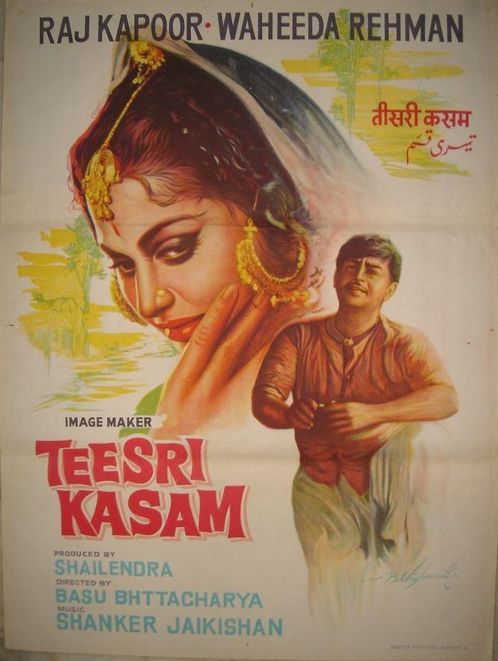
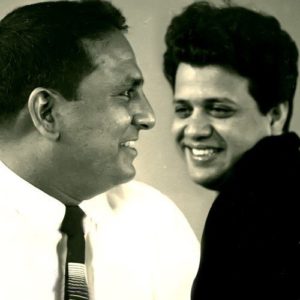 Music Director Shankar Jaikishan were called the ‘house musicians’ of Raj Kapoor since the latter was responsible for having given them a break with his 1949 movie Barsaat. In the movie before that (the debut movie of Raj Kapoor as a director, the 1948 movie Aah, Shankar Jaikishan were assistants to music director Ram Ganguly. Raj Kapoor had a tiff with Ram Ganguly and hence invited S-J for Barsaat. The rest is history. Until Jaikishan died on 12 Sep 1971, Shankar Jaikishan had won the Filmfare Award for Best Music Director eight times (including for Mera Naam Joker in 1972). Considering that the Filmfare Award for Best Music Director started in 1954, it makes them win the coveted award on an average of every alternate year. Raj Kapoor maintained a music bank of their compositions even after Jaikishan died and in his later movies used those compositions though the credit was given to music directors such as Laxmikant Pyarelal.
Music Director Shankar Jaikishan were called the ‘house musicians’ of Raj Kapoor since the latter was responsible for having given them a break with his 1949 movie Barsaat. In the movie before that (the debut movie of Raj Kapoor as a director, the 1948 movie Aah, Shankar Jaikishan were assistants to music director Ram Ganguly. Raj Kapoor had a tiff with Ram Ganguly and hence invited S-J for Barsaat. The rest is history. Until Jaikishan died on 12 Sep 1971, Shankar Jaikishan had won the Filmfare Award for Best Music Director eight times (including for Mera Naam Joker in 1972). Considering that the Filmfare Award for Best Music Director started in 1954, it makes them win the coveted award on an average of every alternate year. Raj Kapoor maintained a music bank of their compositions even after Jaikishan died and in his later movies used those compositions though the credit was given to music directors such as Laxmikant Pyarelal.
S-J emerged as the toppers in various genre of music such as raaga based songs, party songs, and dance numbers. Amongst all the raagas, Bhairavi was their (Jaikishan’s) favourite.
Their music and compositions for the 1956 Raja Nawathe film Basant Bahaar (surprisingly they didn’t get Filmfare Award for it as they were competing with their own Chori Chori) have some of their best raaga based songs:
| 1 | Badi Der Bhai (Pilu) |
Mohd. Rafi |
| 2 | Bhay Bhajana Vandana Sun (Mian ki Malhar) | Manna Dey |
| 3 | Duniya Na Bhaye (Todi) |
Mohd. Rafi |
| 4 | Ja Ja Re Ja Balama (Jhinjhoti) |
Lata Mangeshkar |
| 5 | Kar Gaya Re | Lata Mangeshkar, Asha Bhosle |
| 6 | Ketaki Gulab Juhi (Basant Bahar) |
Manna Dey, Bhimsen Joshi |
| 7 | Main Piya Teri | Lata Mangeshkar |
| 8 | Nain Mile Chain Kahan | Lata Mangeshkar, Manna Dey |
| 9 | Sur Na Saje (Pilu) |
Manna Dey |
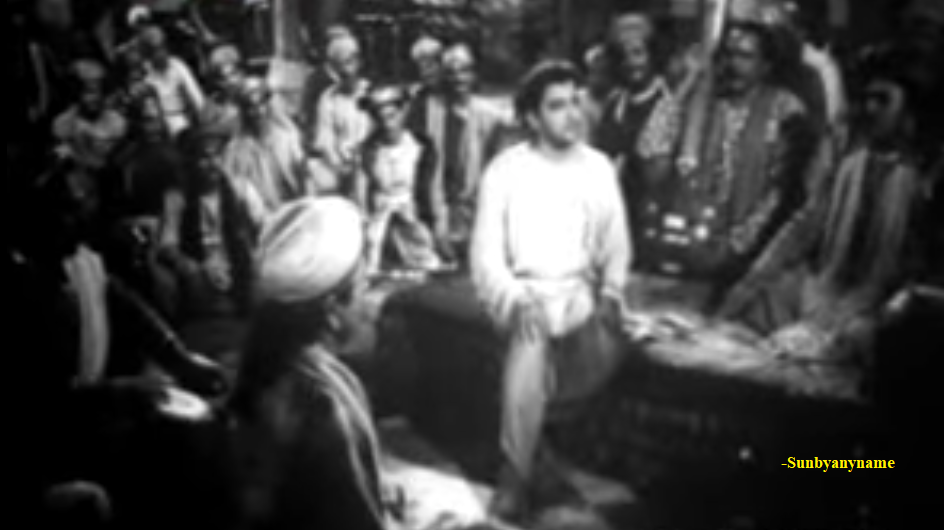
Before we actually take up the song, first, lets take up the value added learning of today. From the last ten times we started learning about some of the leading personalities in Indian Classical Music or Shastriya Sangeet. The first one that we took up was Ustaad Asad Ali Khan, the finest Rudra Veena player in the country. Then we took up Pandit Hari Parsad Chaurasia, the greatest Bansuri player in the country. Then we talked about Ali Akbar Khan, the greatest Sarod player in the country. Then we took up Pandit Ravi Shankar, the greatest Sitar player in the world. Then we took up the greatest classical singer in the country (of Carnatic tradition): MS Subbulakshmi. Then, we took up the greatest classical singer in the country (of Hindustani tradition): Pandit Bhimsen Joshi. Then, we learnt about the Shehnai maestro Ustad Bismillah Khan. Then, we learnt about Annapurna Devi, a great Surbahar (bass sitar) player of Hindustani Classical Music. Thereafter, we took up Pandit Shiv Kumar Sharma, the grestest Santoor player in the country. Finally, we learnt a little more about Ustaad Alla Rakha Qureshi or simply Alla Rakha, the Tabla Maestro and father of Ustaad Zakir Hussain.
Tonight, we shall take up another Shankar: Anand Shankar. He lived between 11 December 1942 and 26 March 1999. He made a huge name for himself for fusing Western and Indian musical styles. He was born in Almora in Uttar Pradesh. His parents Uday Shankar and Amala were both dancers. He was also the nephew of the Sitar maestro Pandit Ravi Shankar.
In the late 1960s, Shankar travelled to Los Angeles, where he played with many contemporary musicians including Jimi Hendrix. There he was signed to Reprise Records and released his first album, Ananda Shankar, in 1970, with original Indian classical material alongside sitar-based cover versions of popular hits, The Rolling Stones’ “Jumpin’ Jack Flash” and The Doors’ “Light My Fire”. The album is included in the book 1001 Albums You Must Hear Before You Die.
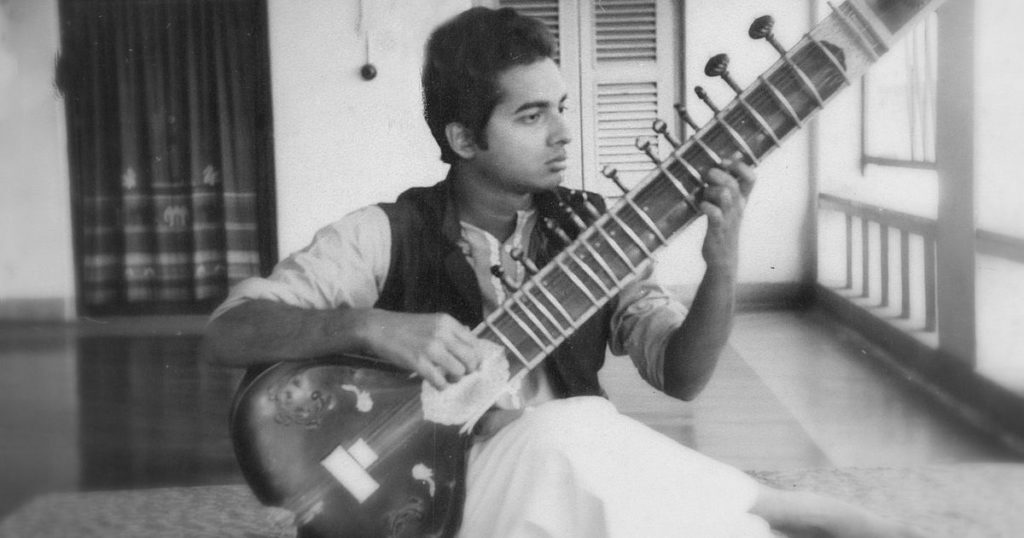
Here is what The Guardian had to say about him: He became one of the foremost exponents of fusion music without diluting the uniqueness of Indian music. He was probably the first to use mridangam with guitar and sitar, and sarod with rockbeat. His work drew from the Ravi Shankar gharana, epitomised by the blend of the late Yehudi Menuhin’s violin style with his uncle’s. ‘He was a true modern composer,’ said the eminent lyricist Pulak Bandopadhyay.
Ladies and gentlemen, on the eve of Waheeda Rehman’s 80th birthday, and on the eve of SJMF’s Second Mumbai Meet please enjoy in Raag Kalyan, Taal Dadra, Asha Bhosle sing a composition of Shankar Jaikishan on the lyrics of Shailendra in the 1966 Shailendra Production and Basu Bhattacharya directed movie Teesri Kasam: Paan khaye sainya hamaro…..
पान खाये सैंयाँ हमारो
साँवली सूरतिया होंठ लाल-लाल
हाय-हाय मलमल का कुरता
मलमल के कुरते पे छींट लाल-लाल
पान खाये सैंयाँ हमारो
( हमने मँगाई सुरमेदानी
ले आया ज़ालिम बनारस का ज़रदा ) -२
आ
अपनी ही दुनिया में खोया रहे वो
हमरे दिल की न पूछे बेदर्दा
पूछे बेदर्दा
पान खाये सैंयाँ हमारो
होय-होय
साँवली सूरतिया होंठ लाल-लाल
हाय-हाय मलमल का कुरता
laugh
मलमल के कुरते पे छींट लाल-लाल
पान खाये सैंयाँ हमारो
( बगिया गुन-गुन पायल छुन-छुन
चुपके से आई है रुत मतवाली ) -२
आ
खिल गईं कलियाँ दुनिया जाने
लेकिन न जाने बगिया का माली
बगिया का माली
पान खाये सैंयाँ हमारो
होय-होय
साँवली सूरतिया होंठ लाल-लाल
हाय-हाय मलमल का कुरता
मलमल के कुरते पे छींट लाल-लाल
पान खाये सैंयाँ हमारो
( खा के गिलोरी शाम से ऊँघे
सो जाये वो दीया-बाती से पहले ) -२
हा
आँगन-अटारी में घबराई डोलूँ
चोरी के डर से दिल मोरा दहले
दिल मोरा दहले
पान खाये सैंयाँ हमारो
साँवली सूरतिया होंठ लाल-लाल
हाय-हाय मलमल का कुरता
laugh
मलमल के कुरते पे छींट लाल-लाल
पान खाये सैंयाँ हमारो
We have intended to learn about Raaga based music whilst we entertain ourselves with Raaga based songs. So, lets, once again, take stock of our collective learning so far:
- On the first day we learnt about the Raaga system devised by Pandit Vishnu Narayan Bhatkhande, which is the prevalent system in Hindustani Classical Music and based on ten Thaats.
- On the second day we learnt about Tal or Taal.
- On the third day we learnt about characteristics of Raagas that included Swar, Jati, Thaat, Arohana and Avarohana, Vadi, Samvadi and Pakad.
- On the fourth day, we learnt about Sargam.
- On the fifth day, we learnt about notations used in Indian classical music or simply Swar Lipi.
- On the sixth day, we learnt about the Ras (sentiments) that Raagas evoke.
- On the seventh day, we learnt about various types of Swar: Shuddha, Achal, Vikrut, Komal and Teevra.
- On the eighth day, we learnt the parts of a composition in Indian Classical Music.
- On the ninth day, we learnt the names of some of the popular instruments used in Indian Classical Music.
- On the tenth day, we learnt about the sources of names of Raagas.
- On the eleventh day, we learnt about why Bhairavi is the first raag to be taught to beginners and also why it is the last in a performance.
- On the twelfth day, we learnt about Khammaj Thaat.
- On the thirteenth day, we learnt about Tal Punjabi Theka or Sitarkhani.
- On the fourteenth day, we learnt about Alap.
- On the fifteenth day, we learnt about List of Raagas (Raagmala) in my favourite book: Sri Guru Granth Sahib.
- On the sixteenth day, we learnt about tips for raaga identification.
- On the seventeenth day, we learnt the basics of Gharana system.
- On the eighteenth day, we learnt about Filmi Sangeet.
- On the nineteenth day, we learnt about the commonest Tal in Raagas: Tintal.
- On the twentieth day, we learnt about the Kafi Thaat.
- On the twenty-first day, we learnt a little more in detail about the classification of Raagas.
- On the twenty-second day, we learnt the essential differences between Bhairavi and Bhairav.
- On the twenty-third day, we learnt a little more in detail about the Jati or Jaati of a raaga.
- On the twenty-fourth day, we learnt details of Thaat Bilawal, the most basic thaat in the Bhatkhande’s system of raagas.
- On the twenty-fifth day, we learnt about Tintal.
- On the twenty-sixth day, we learnt in detail about the Raaga – Samay linkage.
- On the twenty-seventh day, we learnt about Lehar.
- On the twenty-eighth day, we learnt about the history of the Hindustani Music.
- On the twenty-ninth day, we learnt about Dhrupad.
- On the thirtieth day, we learnt about Rupaktal that I was introduced to, a few months back, by my friend Anand Desai.
- On the thirty-first day, we learnt about Khayal.
- On the thirty-second day, we learnt about Thumri.
- On the thirty-third day, we learnt about Tappa.
- On the thirty-fourth day, we learnt about Tarana.
- On the thirty-fifth day, we learnt about Tal Dipchandi (Moghali).
- On the thirty-sixth day, we learnt about Tabla.
- On the thirty-seventh day, we learnt about Kirtan.
- On the thirty-eighth day, we learnt about Pakhawaj.
- On the thirty-ninth day, we learnt about Hori.
- On the fortieth day, we learnt about Dadra.
- On the forty-first day, we learnt about Kajri.
- On the forty-second day, we learnt about Chaiti.
- On the forty-third day, we learnt about Sarangi.
- On the forty-fourth day, we learnt about Shehnai.
- On the forty-fifth day, we learnt about Sarod.
- On the forty-sixth day, we learnt about Bansuri.
- On the forty-seventh day, we learnt about Ektal and Tanpura.
- On the forty-eighth day, we learnt about Veena.
- On the forty-ninth day, we repeated our learning of Veena with a small excitement added.
- On the fiftieth day, we learnt about Dilruba/Esraj.
- On the fifty-first day, we learnt about Jaltarang.
- On the fifty-second day we learnt about Qawwali.
- On the fifty-third day, we learnt about Sitar.
- On the fifty-fourth day, we learnt about Surbahar.
- On the fifty-fifth day, we learnt about Harmonium.
- On the fifty-sixth day, we learnt about Santoor.
- On the fifty-seventh day, we learnt about Swarmandal.
- On the fifty-eighth day, we learnt about the Shruti Box.
- On the fifty-ninth day, we learnt about Alankar.
- On the sixtieth day, we learnt about singing in Aakaar.
- On the sixty-first day, we learnt about the Classification of Indian Musical Instruments.
- On the sixty-second day, we learnt a little about Carnatic Music.
- On the sixty-third day, we learnt about Natya Shastra.
- On the sixty-fourth day, we learnt about evolution of musical instruments in India down the ages.
- On the sixty-fifth day, we learnt about Riyaaz.
- On the sixty-sixth day, we looked at a list of Raagas in Hindustani Classical Music.
- On the sixty-seventh day, we learnt about the health benefits of raagas.
- On the sixty-eighth day, we learnt a little more comprehensively about the moods and emotions that raagas evoke.
- On the sixty-ninth day, we learnt about a mobile application to help identify raagas.
- On the seventieth day, we learnt about Melakarta Raagas.
- On the seventy-first day, we learnt about Sangita Makarand.
- On the seventy-second day, we learnt about TaalMala an Android application for personalized accompaniment of musical instruments during Riyaaz or even during Concert.
- On the seventy-third day, we learnt about Indian Classical Ragas, an Android application for mobile phones.
- On the seventy-fourth day, we learnt about Saregama Classical, another application for Classical Raagas.
- On the seventy-fifth day, we learnt about a free online service available to learn Indian Classical Music.
- On the seventy-sixth day, we learnt about List of Hindustani Classical Musical Festivals in India and Abroad.
- On the seventy-seventh day, we learnt about List of Carnatic Musical Festivals in India and Abroad.
- On the seventy-eighth day, we learnt about Jhaptal.
- On the seventy-ninth day, we learnt about Ektal.
- On the eightieth day, we learnt about Tivra Tal.
- On the eighty-first day, we learnt about the greatest Rudra Veena player ever: Ustaad Asad Ali Khan.
- On the eighty-second day, we learnt about the greatest Bansuri player alive: Pandit Hariprasad Chaurasia.
- On the eighty-third day, we learnt about the best Sarod player in the country: Ustaad Ali Akbar Khan.
- On the eighty-fourth day, we learnt about the greatest Sitar player in the world: Pandit Ravi Shankar.
- On the eighty-fifth day, we learnt about the greatest Indian vocalist of Carnatic tradition: MS Subbulakshmi.
- On the eighty-sixth day, we not just learnt about the greatest vocalist of Hindustani tradition: Pandit Bhimsen Joshi but also learnt about Tal Hinch.
- On the eighty-seventh day, we learnt about the Shehnai maestro Ustaad Bismillah Khan.
- On the eighty-eighth day, we learnt about Annapurna Devi, the greatest Surbahar player in India.
- On the eighty-ninth day, we learnt about Pandit Shiv Kumar Sharma, the greatest Santoor Player in the country.
- On the ninetieth day, we learnt about Ustaad Alla Rakha, the Tabla maestro.
- And today, on the ninety-first day, we learnt about Anand Shankar, the great fusion musician from Bengal.
There is much more still to be learnt and enjoyed.
Please stay tuned!
